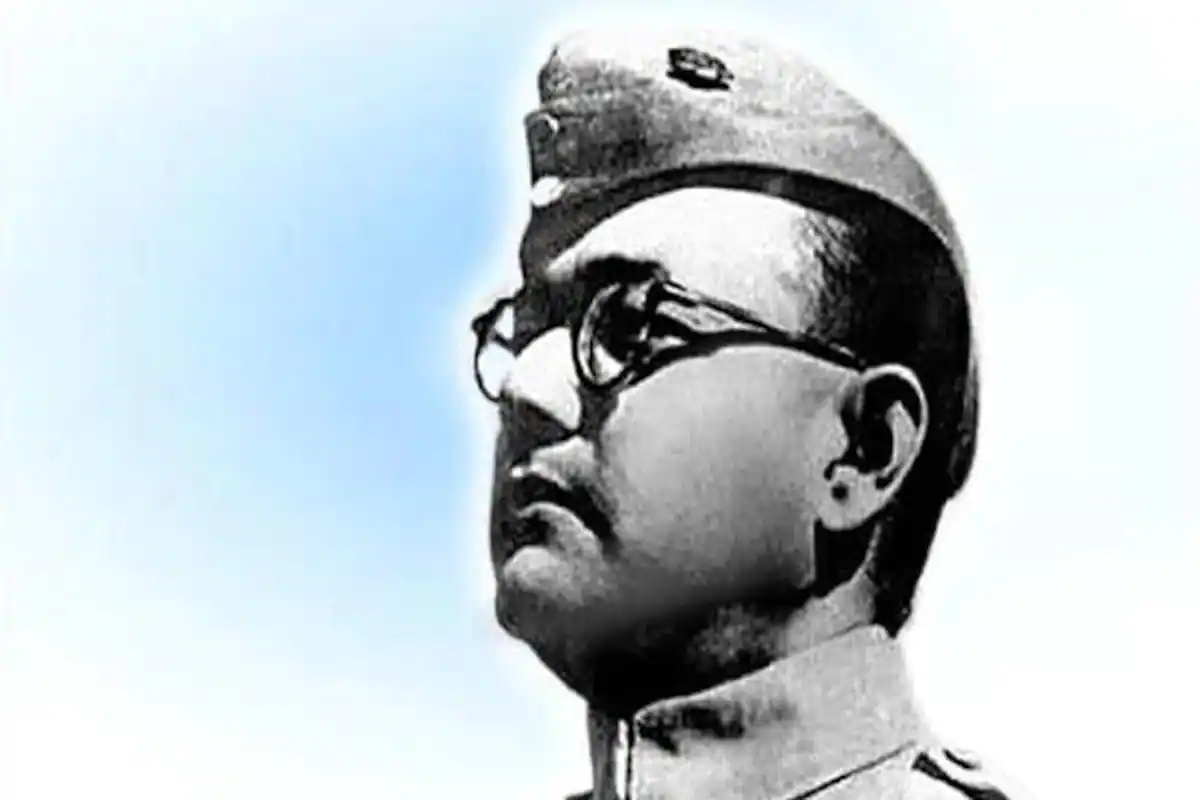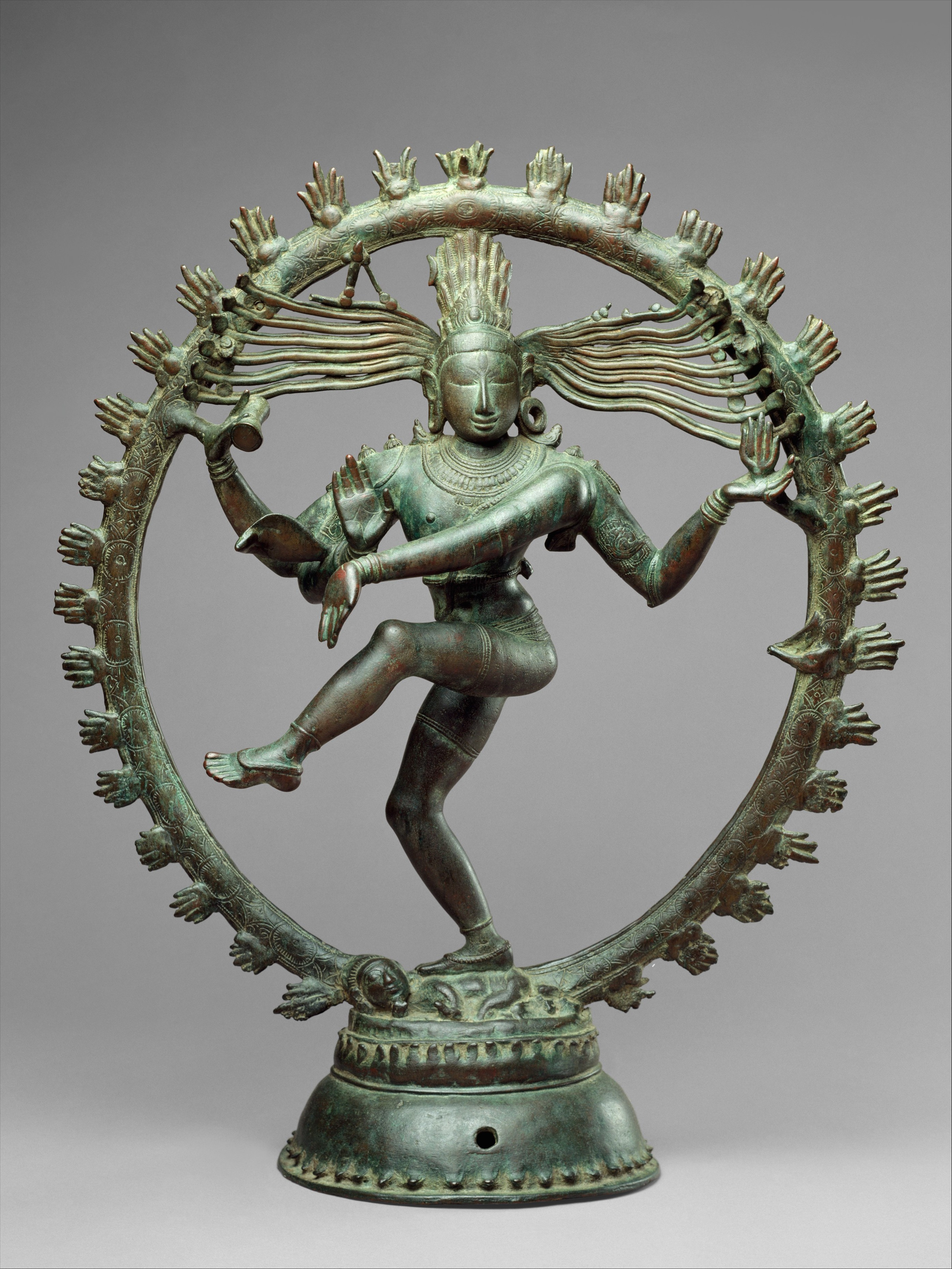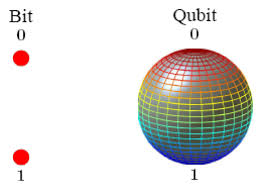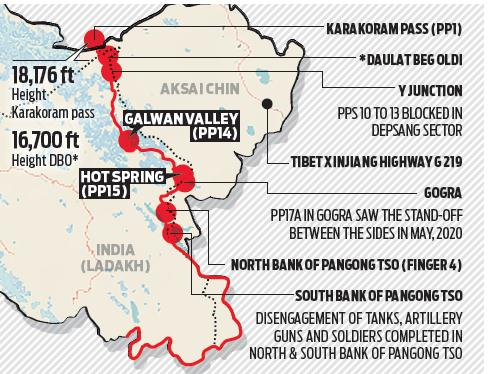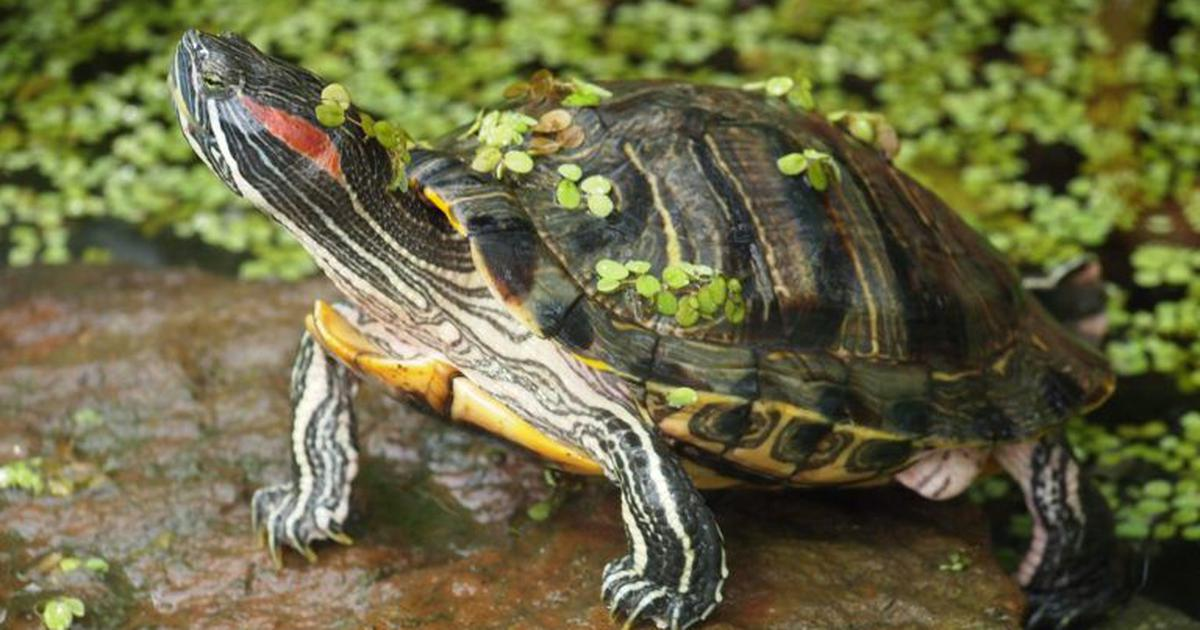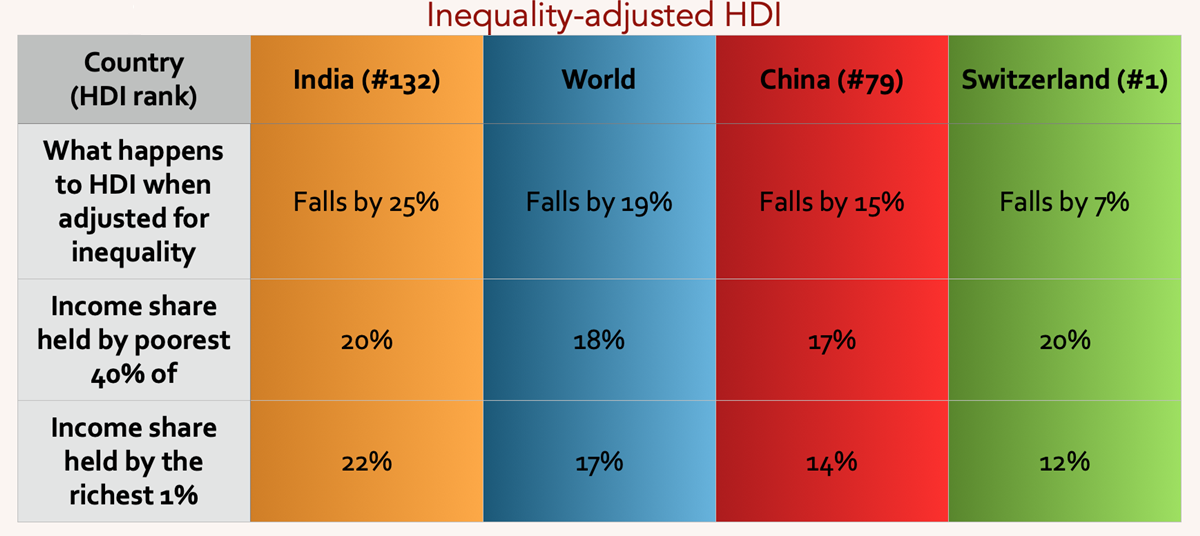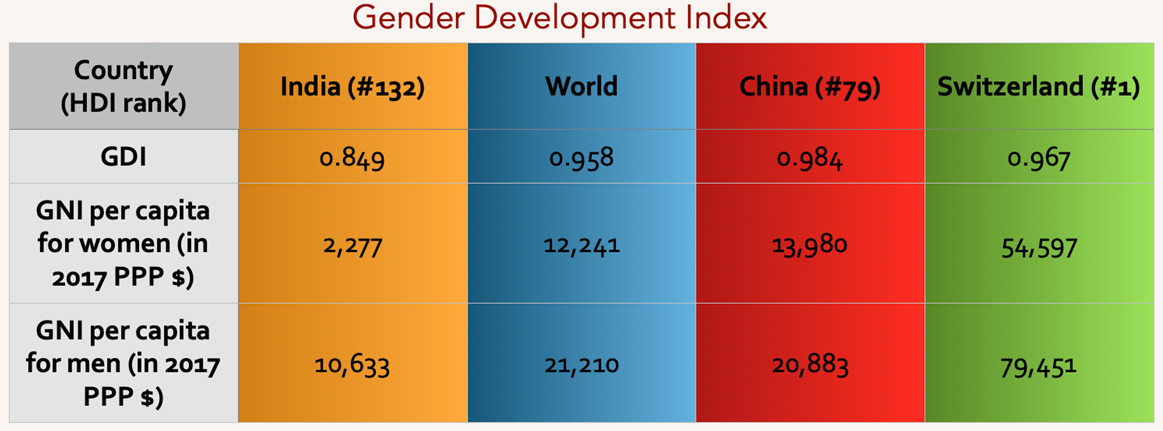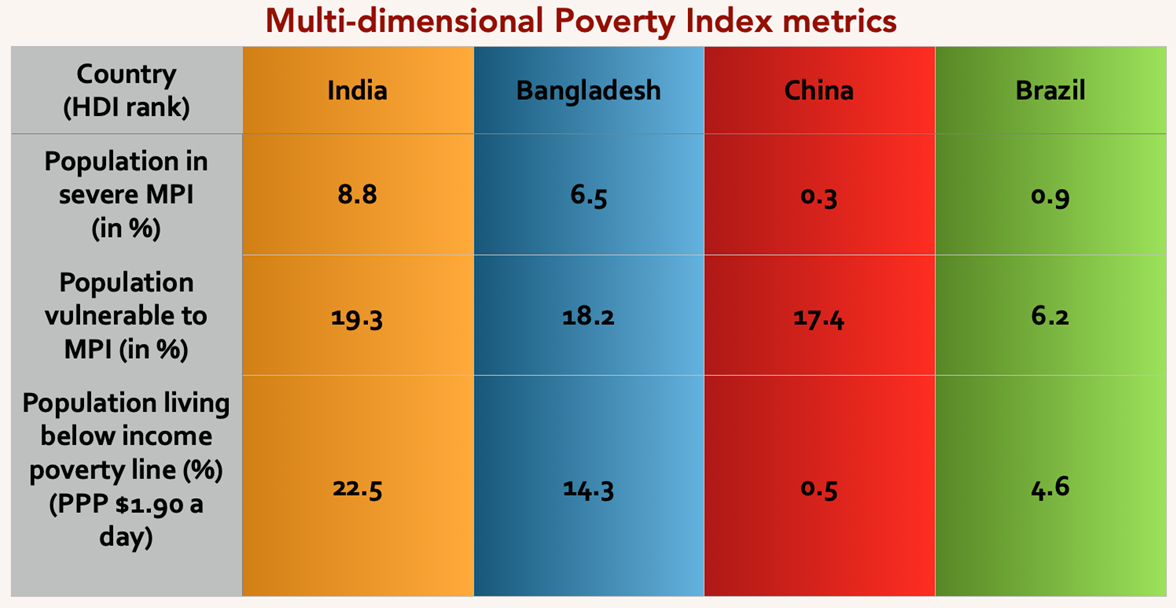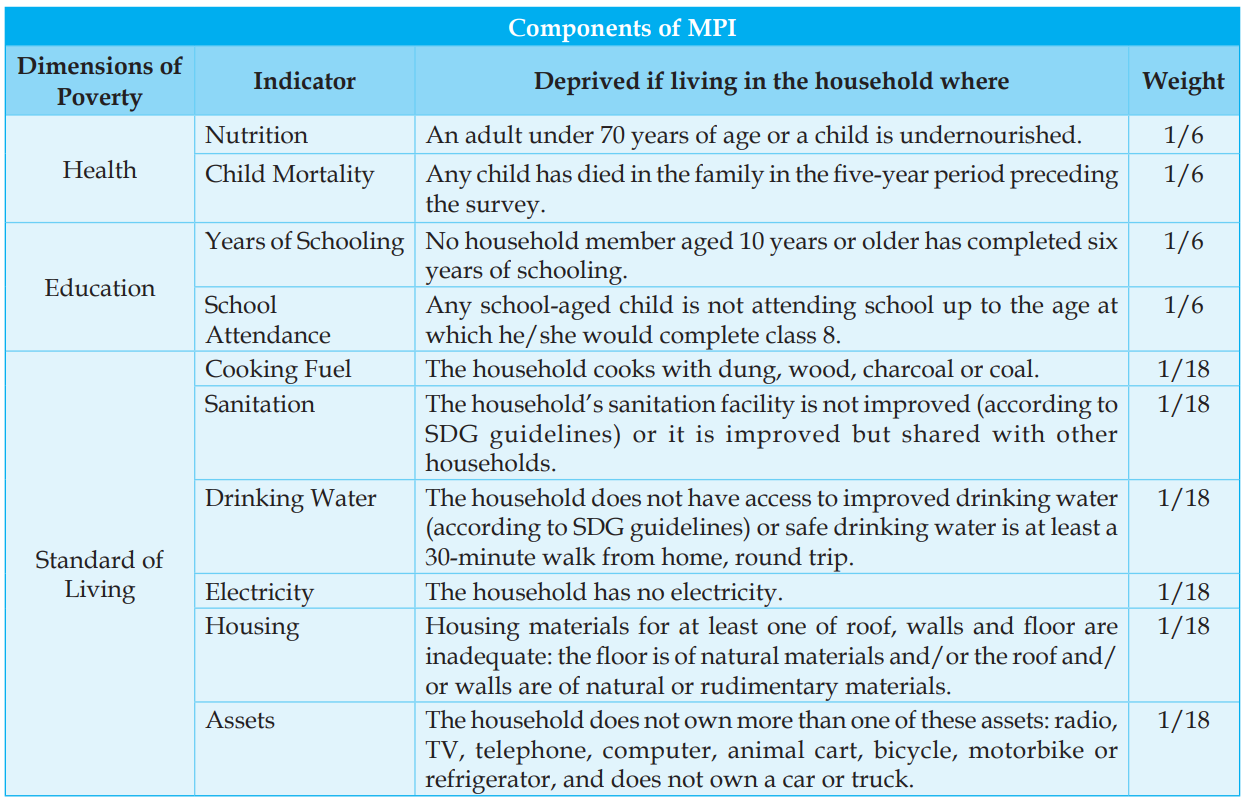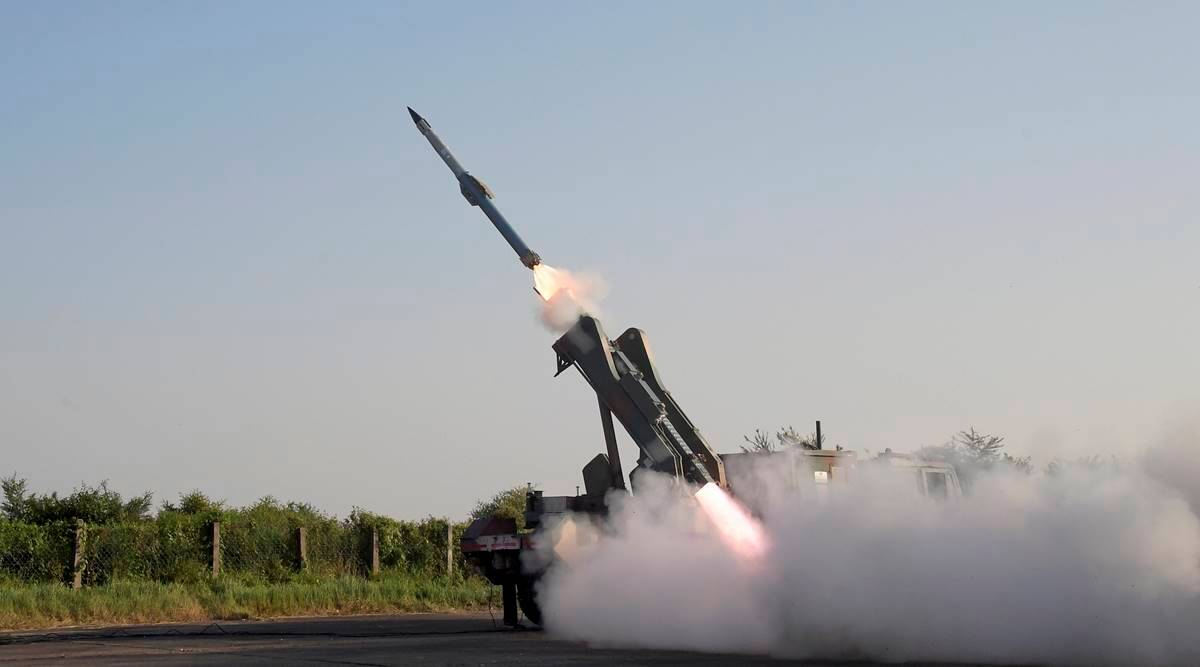Infographics
Indian History
Kartavya Path
For Prelims: Netaji Subhas Chandra Bose, Kartavya Path, Central Vista.
For Mains: Kartavya Path and its Significance, History of Rajpath.
Why in News?
The Prime Minister inaugurated the 'Kartavya Path' and unveiled the statue of Netaji Subhas Chandra Bose at India Gate.
What are Key Inaugurations?
- Kartavya Path symbolizes a shift from erstwhile Rajpath being an icon of power to Kartavya Path being an example of public ownership and empowerment.
- The statue of Netaji Subhas Chandra Bose made of granite, is a fitting tribute to the immense contribution of Netaji to our freedom struggle, and would be a symbol of the country’s indebtedness to him.
- Crafted by Shri Arun Yogiraj, who was the main sculptor, the 28 feet tall statue has been carved from a monolithic granite stone and weighs 65 MT.
- These steps are in line with Prime Minister’s second ‘Panch Pran’ pledged during 75th Independence Day 2022, for New India in Amrit Kaal: ‘remove any trace of colonial mindset’.
What is the Need for Revamping Rajpath?
- Over the years, Rajpath and adjoining areas of the Central Vista Avenue had been witnessing pressure of increasing traffic of visitors, putting stress on its infrastructure.
- Central Vista Avenue is part of the government’s ambitious Central Vista redevelopment project.
- It lacked basic amenities like public toilets, drinking water, street furniture and adequate parking space.
- Further, there was inadequate signage, poor maintenance of water features and haphazard parking.
- Also, a need was felt to organise the Republic Day parade and other National events in a less disruptive manner with minimal restrictions on public movement.
- The redevelopment has been done bearing these concerns in mind while also ensuring the integrity and continuity of architectural character.
What is the Brief History of Rajpath?
- Called Kingsway during British rule, the three-km stretch was built as a ceremonial boulevard by Edwin Lutyens and Herbert Baker, the architects of New Delhi, more than a hundred years ago.
- The capital of the Raj moved to New Delhi from Calcutta in 1911, and construction continued for several years thereafter.
- Lutyens conceptualised the modern imperial city centred around a “ceremonial axis”, which was named Kingsway in honour of the then Emperor of India, George V, who visited Delhi during the Durbar of 1911, where he formally proclaimed the decision to move the capital.
- The nomenclature followed that of the Kingsway in London, an arterial road built in 1905, which was named in honour of King Edward VII, the father of George V.
- Following Independence in 1947, the road was given its Hindi name, Rajpath, on which the Republic Day parades took place over the decades that followed.
What is the Kartavya Path and its Significance?
- The entire stretch and the area from the Netaji statue under the Grand Canopy to the Rashtrapati Bhavan will be known as Kartavya Path.
- Kartavya Path includes the erstwhile “Rajpath and Central Vista lawns”.
- Kartavya Path will exhibit landscapes, lawns with walkways, added green spaces, refurbished canals, amenity blocks, improved signages and vending kiosks.
- It also includes a number of sustainability features like solid waste management, storm-water management, recycling of used water, rainwater harvesting, water conservation and energy efficient lighting systems, among others.
- The revamped and expanded lawns on both sides of the erstwhile Rajpath are part of the larger Central Vista project, where a new triangular Parliament building, along with the Central Secretariat and several other government offices, are being rebuilt.
What are the Key Points Related to Subhash Chandra Bose?
- Birth:
- Subhas Chandra Bose was born on 23rd January 1897, in Cuttack, Orissa Division, Bengal Province, to Prabhavati Dutt Bose and Janakinath Bose.
- His Jayanti is celebrated as 'Parakram Diwas' on 23rd January.
- Subhas Chandra Bose was born on 23rd January 1897, in Cuttack, Orissa Division, Bengal Province, to Prabhavati Dutt Bose and Janakinath Bose.
- Education and Early Life:
- In 1919, he had cleared the Indian Civil Services (ICS) examination. Bose, however, resigned later.
- He was highly influenced by Vivekananda's teachings and considered him as his spiritual Guru.
- His political mentor was Chittaranjan Das.
- He worked as the editor for Das’s newspaper–Forward, and later started his own newspaper, Swaraj.
- Association with Congress:
- He stood for unqualified swaraj (independence), and opposed the Motilal Nehru Report which spoke for dominion status for India.
- He actively participated in the Salt Satyagraha of 1930 and vehemently opposed the suspension of the Civil Disobedience Movement and signing of the Gandhi-Irwin Pact in 1931.
- In the 1930s, he was closely associated with left politics in Congress along with Jawaharlal Nehru and M.N. Roy.
- Bose won the congress presidential elections at Haripura in 1938.
- Again in 1939 at Tripuri, he won the presidential elections against Gandhi's candidate Pattabhi Sitarammayya. Due to ideological differences with Gandhi, Bose resigned and left congress. Rajendra Prasad was appointed in his place.
- He founded a new party, 'the Forward Bloc'. The purpose was to consolidate the political left and major support base in his home state Bengal.
- Indian National Army:
- He reached Japanese-controlled Singapore from Germany in July 1943, issued from there his famous call, ‘Delhi Chalo’, and announced the formation of the Azad Hind Government and the Indian National Army on 21st October 1943.
- The INA was first formed under Mohan Singh and Japanese Major Iwaichi Fujiwara and comprised Indian prisoners of war of the British-Indian Army captured by Japan in the Malayan (present-day Malaysia) campaign and at Singapore.
- The INA included both the Indian prisoners of war from Singapore and Indian civilians in South-East Asia. It's strength grew to 50,000.
- The INA fought allied forces in 1944 inside the borders of India in Imphal and in Burma.
- In November 1945, a British move to put the INA men on trial immediately sparked massive demonstrations all over the country.
- Death:
- He is said to have died in 1945 when his plane crashed in Taiwan. However, there are still many conspiracy theories regarding his death.
UPSC Civil Services Examination, Previous Year Questions (PYQs)
Prelims
Q. During the Indian Freedom Struggle, who of the following raised an army called ‘Free Indian Legion’? (2008)
(a) Lala Hardayal
(b) Rashbehari Bose
(c) Subhas Chandra Bose
(d) V.D. Savarkar
Ans: (c)
Exp:
- The Free Indian Legion was an infantry regiment formed by Indian volunteers. The legion was made up of Indian prisoners of wars and expatriates in Europe.
- The Indian Independence leader, Netaji Subhash Chandra Bose formed this legion with the help of German Government to fight against the British. The legion is also known as “Tiger Legion“.
- Therefore, option (c) is the correct answer.
Mains
Q. In what ways did the naval mutiny prove to be the last nail in the coffin of British colonial aspirations in India? (2014)

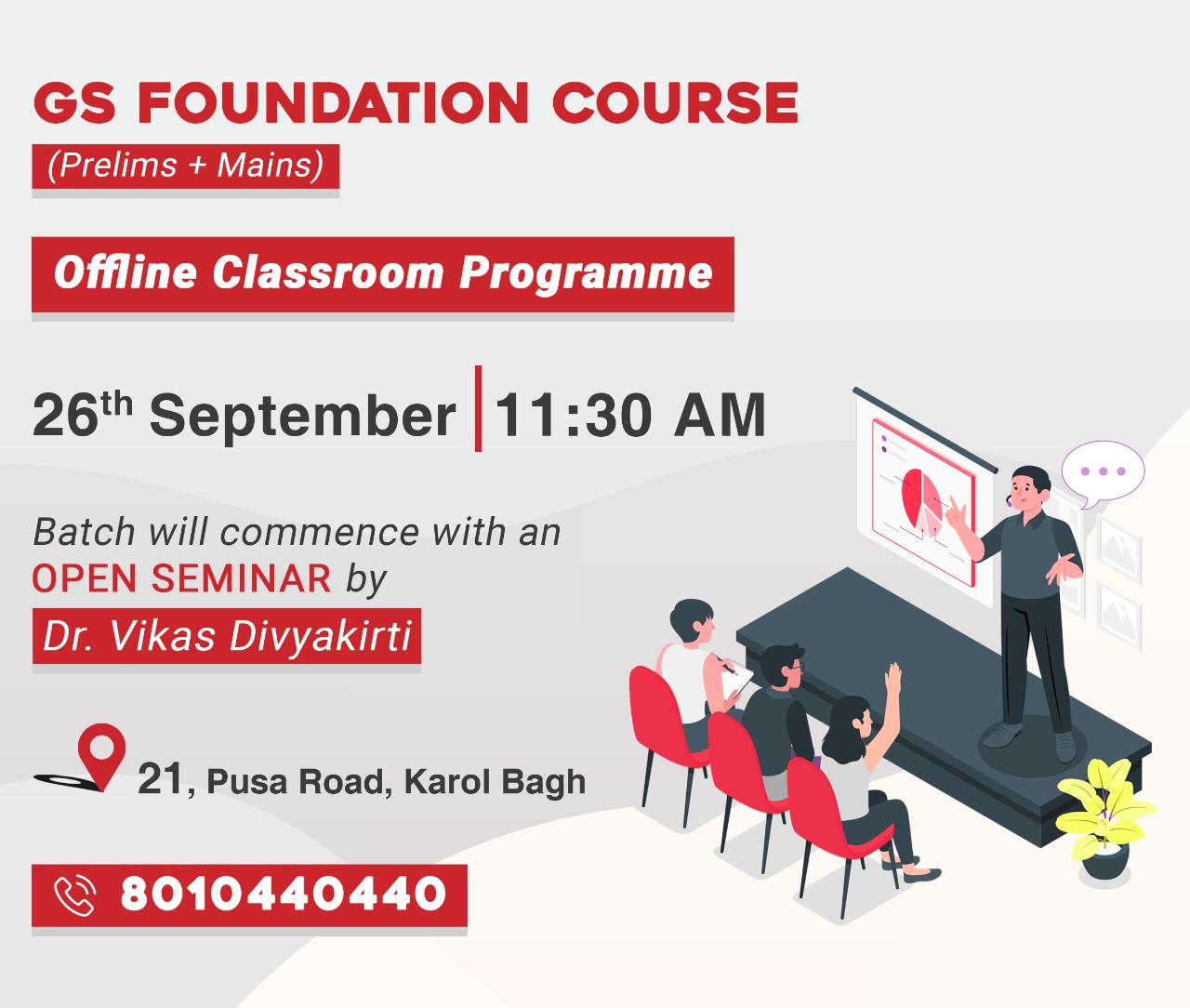
Indian History
Chola Dynasty
For Prelims: Art and Craftmanship in Chola Era, Cholas Sculpture.
For Mains: Chola Dynasty.
Why in News?
The Tamil Nadu Idol Wing CID has initiated steps to retrieve six Chola-era bronze idols, stolen from the Nareeswara Sivan temple, Tamil Nadu back in the 1960s, and currently kept at various museums in the United States.
- The idols were successfully traced to the US recently with the help of the images available with the Indo-French Institute, Pondicherry, which had documented nine bronze sculptures in 1956. Of them, seven were stolen five decades ago.
- The institute had provided images of antique Panchaloha idols of Tripuranthakam, Thirupurasundari, Nataraja, Dakshinamurthy Veenadhara, and Saint Sundarar with his wife Paravai Natchiyaar.
How was the Medieval Chola Dynasty?
- About:
- The Cholas (8th-12th century AD) are remembered as one of the longest ruling dynasties in the southern regions of India.
- The reign of the Cholas began in the 9th century when they defeated the Pallavas to come into power. This rule stretched over for over five long centuries until the 13th century.
- The medieval period was the era of absolute power and development for the Cholas. This is when kings like Aditya I and Parantaka I.
- From here Rajaraj Chola and Rajendra Chola further expanded the kingdom into the Tamil region. Later Kulothunga Chola took over Kalinga to establish a strong rule.
- This magnificence lasted until the arrival of the Pandyas in the early 13th century.
- Prominent Monarchs:
- Vijayalaya: The Chola Empire was founded by Vijayalaya. He took over the Tanjore kingdom in the 8th century and led to the rise of the mighty Cholas by defeating the Pallavas.
- Aditya I: Aditya I succeeded Vijayalaya to become the ruler of the empire. He defeated king Aparajita and the empire gained massive power under his reign. He conquered the Pandya Kings along with the Vadumbas and established control over the Pallavas' power in the region.
- Rajendra Chola: He succeeded the mighty Rajaraja Chola. Rajendra I was the first to venture to the banks of Ganges. He was popularly called the Victor of the Ganges. This period is referred to as the golden age of the Cholas. After his rule, the kingdom witnessed a widespread downfall.
- Administration And Governance:
- During the governance by the Cholas, the entire southern region was brought under the umbrella of a single governing force. The Cholas ruled in a sustained Monarchy.
- The massive kingdom was divided into provinces which were known as mandalams.
- Separate governors were held in charge for each mandalam.
- These were further divided into districts called nadus which consisted of tehsils.
- The system of rule was such that each village acted as a self-governing unit during the era of the Cholas. The Cholas were ardent patrons of art, poetry, literature and drama, the administration was seen investing in the construction of several temples and complexes with sculptures and paintings.
- The king remained the central authority who would make the major decisions and carry out the governance.
- Architecture:
- Chola architecture (871-1173 AD) was the epitome of the Dravida style of temple architecture.
- They produced some of the most grandeur temples in medieval India.
- Chola temples like Brihadeshwara temple, Rajarajeshwara temple, Gangaikonda Cholapuram temple took Dravidian architecture to newer heights. Temple architecture continued to flourish even after Cholas.
What are the Key Points of Cholas Sculpture?
- An important piece of Chola sculpture was the sculpture of Nataraja in the Tandava dance posture.
- Though the earliest known Nataraja sculpture, which has been excavated at Ravana phadi cave at Aihole, was made during the early Chalukya rule, the sculpture reached its peak under the Cholas.
- The later phase of Chola art, in the 13th century, is illustrated by the sculpture showing Bhudevi, or the earth goddess as the younger consort of Vishnu. She stands in a gracefully flexed attitude on a lotus base holding a lily in her right hand, while the left arm hangs along her side.
- Chola bronze images are considered amongst the finest in the world.
UPSC Civil Services Examination, Previous Year Questions (PYQs)
Prelims
Q. Consider the following events in the history of India: (2020)
- Rise of Pratiharas under King Bhoja
- Establishment of Pallava power under Mahendravarman-I
- Establishment of Chola power by Parantaka-I
- Pala dynasty founded by Gopala
What is the correct chronological order of the above events, starting from the earliest time?
(a) 2 – 1 – 4 – 3
(b) 3 – 1 – 4 – 2
(c) 2 – 4 – 1 – 3
(d) 3 – 4 – 1 – 2
Ans: (c)
Exp:
- The Pallava dynasty existed from 275 CE to 897 CE, ruling a portion of southern India. Pallavas became a major power during the reign of Mahendravarman I (571–630 CE) who ruled the Southern portion of present day Andhra region and Northern regions of what forms present-day Tamil Nadu.
- Pala dynasty reigned in Bihar and Bengal from the 8th to the 12th century. Its founder, Gopala (750-770 CE), was a local chieftain who rose to power in the mid-eighth century during a period of anarchy.
- From the middle of the eighth century the dominance over Madhyadesha became the ambition of two particular clans among tribal people in Rajasthan, known as the Gurjara and the Pratihara. According to a contemporary Arab account from 851 CE, Raja Mihir Bhoja (840–851 CE), the greatest of the Pratiharakings, was among the princes of India that battled against the Arab invaders.
- The Chola Empire was founded by Vijayalaya. The reign of the Cholas began in the 9th century when they defeated the Pallavas to come into power. The medieval period was the era of absolute power and development for the Cholas. Parantaka I (reigned 907–953) laid the foundation of the kingdom. He took the northern boundary up to Nellore (Andhra Pradesh), where his advance was stopped by a defeat at the hands of the Rashtrakuta king Krishna III. Parantaka was more successful in the south, where he defeated both the Pandyas and the Ganga
Mains
Q. Chola architecture represents a high watermark in the evolution of temple architecture. Discuss. (2013)

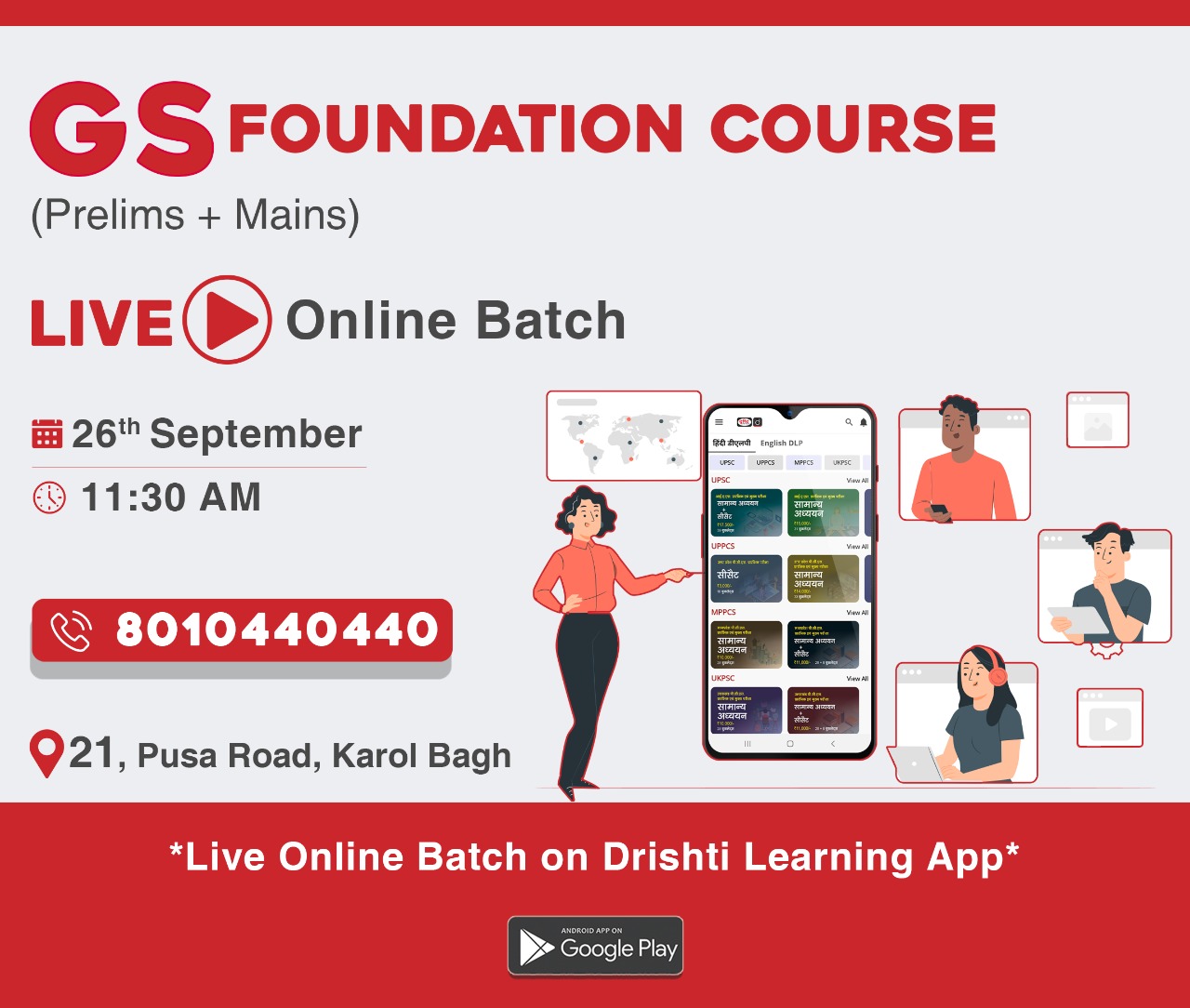
Indian Economy
Slide in Global Oil Prices
For Prelims: Organisation of the Petroleum Exporting Countries (OPEC+) plus, RBI, Inflation, Fiscal Deficit.
For Mains: Slide in Oil Prices and its impact on India.
Why in News?
Brent crude prices have fallen sharply over the last ten days, the prices have declined to under USD 90 per barrel.
- While they were trading at around $110 per barrel in July,2022.
What led to the Fall in Global Crude Oil Prices?
- The crude prices fell sharply by around 4% and the decline has come despite Organisation of the Petroleum Exporting Countries (OPEC+) plus announcement to cut supply by 100,000 barrels per day beginning October, 2022 in a bid to prop up the prices.
- While the prices have been softening over the last couple of months, the recent sharp decline is due to renewed fears of recession in Europe and decline in demand from China, which brought in new Covid lockdown measures amid weakening factory activity.
- There is a concern that these factors could dent the future demand of crude oil.
- Market participants say OPEC’s decision to cut production is in itself an indication that it expects a decline in demand and further softening in prices.
How would Global Crude Oil Price Impact India?
- Impact of Rise in Global Oil Price:
- India imports nearly 85% of its crude requirement and in the year ended March 2022, the oil import bill doubled to USD 119 billion on account of rise in prices.
- The rise in import bill not only leads to inflation and rise in current account deficit and fiscal deficit, but also weakens the rupee against the dollar and hurts stock market sentiment.
- A rise in crude oil price also has an indirect impact on India as it leads to a rise in edible oil prices, coal prices and also that of fertilizers as they use gas as feedstock. Gas accounts for 80% of all fertilizer production costs.
- So, if a rise in crude oil prices could lead to a much-enhanced import burden, it also leads to reduction in demand in the economy which hurts growth.
- It could also lead to higher fiscal deficit if the government chooses to bear the burden by way of subsidies.
- Impact of Fall in Global Price:
- A softening in crude oil prices is a big relief for all stakeholders – the government, the consumers and even the corporates.
- If oil continues to trade at lower levels, it will result in lower inflation levels, higher disposable incomes and thereby higher economic growth.
- If on the one hand it is a reflection of expectations of slowdown in global growth which may have its bearing on India’s growth too, on the other it comes as a big respite for India.
- Softening crude oil price has also played a role in the index rise on equity and debt markets as companies across sectors are sensitive to crude oil prices.
UPSC Civil Services Examination Previous Year Question (PYQ)
Prelims
Q. The term ‘West Texas Intermediate’, sometimes found in news, refers to a grade of (2020)
(a) Crude oil
(b) Bullion
(c) Rare earth elements
(d) Uranium
Ans: (a)
- West Texas intermediate (WTI), also known as Texas light sweet, is a grade of crude oil used as a benchmark in oil pricing.
- WTI is described as light crude oil because of its relatively low density, and sweet because of its low sulfur content.
- It is sourced from US oil fields, primarily in Texas, Louisiana, and North Dakota.
- Therefore, option (a) is the correct.
Mains
Q. Petroleum refineries are not necessarily located nearer to crude oil producing areas, particularly in many of the developing countries. Explain its implications. (2017)


Science & Technology
India & Quantum Computing
For Prelims: Quantum Computing, Qiskit Challenge, quantum computing laboratory, National Mission on quantum technologies and applications, Centre for Development of Telematics (C-DOT), I-HUB Quantum Technology Foundation, Centre for Development of Advanced Computing (C-DAC), National Mission on quantum technologies and applications.
For Mains: Significance of Quantum Computing.
Why in News?
According to a study by IBM, India is witnessing a growing interest in quantum computing, with students, developers, and academia actively participating. Consequently, the country is emerging as a talent hub for quantum computing.
What is Quantum Computing?
- About:
- Quantum computing is a rapidly-emerging technology that harnesses the laws of quantum mechanics to solve problems too complex for classical computers.
- Quantum mechanics is a subfield of physics that describes the behavior of particles — atoms, electrons, photons, and almost everything in the molecular and submolecular realm.
- It is an exciting new technology that will shape our world tomorrow by providing us with an edge and a myriad of possibilities.
- It is a fundamentally different way of processing information compared to today’s classical computing systems.
- Quantum computing is a rapidly-emerging technology that harnesses the laws of quantum mechanics to solve problems too complex for classical computers.
- Features:
- Different from Traditional Computers:
- While today’s classical computers store information as binary 0 and 1 states, quantum computers draw on the fundamental laws of nature to carry out calculations using quantum bits.
- Unlike a bit that has to be a 0 or a 1, a qubit can be in a combination of states, which allows for exponentially larger calculations and gives them the potential to solve complex problems which even the most powerful classical supercomputers are not capable of.
- Different from Traditional Computers:
- Significance:
- Quantum computers can tap into the quantum mechanical phenomenon to manipulate information and are expected to shed light on processes of molecular and chemical interactions, address difficult optimization problems, and boost the power of artificial intelligence.
- These could open the door to new scientific discoveries, life-saving drugs, and improvements in supply chains, logistics and the modelling of financial data.
What are IBM India’s Initiatives around Quantum Computing?
- Qiskit Challenge: Qiskit is an open-source software development kit built by IBM for the quantum developer community.
- Qiskit India Week of Quantum: IBM regularly organizes India-focused programmes such as Qiskit India Week of Quantum, which celebrated women in quantum to kickstart their journeys in quantum, and was attended by almost 300 students.
- The Qiskit Textbook: Qiskit textbook is available in Tamil, Bengali and Hindi and was accessed more than 30,000 times by students in India in 2021 alone.
- IBM Quantum Educators Programme: IBM is collaborating with leading educational institutions in India through the IBM Quantum Educators Programme.
- The faculty and students of these institutions will be able to access IBM Quantum systems, quantum learning resources and quantum tools over IBM Cloud for educational purposes.
What are the Key Initiatives taken by the Indian Government?
- National Mission on quantum technologies and applications: The Government in its 2021 budget allocated INR 8000 Crore towards the National Mission on quantum technologies and applications to spur developments in quantum computing, cryptography, communications, and material science.
- Quantum Computing Laboratory: In December 2021, the Indian Army set up a quantum computing laboratory and an AI centre at a military engineering institute at Mhow, Madhya Pradesh. It is also backed by the National Security Council Secretariat (NSCS).
- Quantum Communication Lab: The Centre for Development of Telematics (C-DOT) launched a quantum communication lab in October 2021. It can support more than 100 km of standard optical fibre.
- Collaborations: The Defence Institute of Advanced Technology (DIAT) and the Centre for Development of Advanced Computing (C-DAC) agreed to collaborate and develop quantum computers.
- I-HUB Quantum Technology Foundation: The Department of Science and Technology and about 13 research groups from IISER Pune launched I-HUB Quantum Technology Foundation (I-HUB QTF) to further enhance the development of quantum tech.
- Startups: A number of Start-Ups such as Qunu Labs, Bangalore; BosonQ, Bhilai have also emerged and as a result, they are making inroads in this area.
Way Forward
- Similar to the fast-growing Artificial Intelligence market, quantum computing, as another technology, has created a wave among the countries and companies globally to get into a race and acquire a leadership position.
- The need of the hour, therefore, is simultaneously to build sufficient quantum computational capacity, develop skills in building and operationalizing a practical size and affordable cost quantum computer, continue research into realizing the various practical applications, and introduce contents into the educational courses at undergrad and post-grad levels to develop quantum science and engineering as a discipline at the university level that will produce a large number of science and technology heads.
UPSC Civil Services Examination Previous Year Question (PYQ)
Prelims
Q. Which one of the following is the context in which the term "qubit" is mentioned?
(a) Cloud Services
(b) Quantum Computing
(c) Visible Light Communication Technologies
(d) Wireless Communication Technologies
Ans: (b)
Exp:
- Quantum Supremacy
- Quantum computers compute in ‘qubits’ (or quantum bits). They exploit the properties of quantum mechanics, the science that governs how matter behaves on the atomic scale.
- Hence, option (b) is correct.
Mains
Q. “The emergence of the Fourth Industrial Revolution (Digital Revolution) has initiated e-Governance as an integral part of government”. Discuss. (2020)


International Relations
Indo-China Disengagement at Hot Springs & Gogra Post
For Prelims: India-China Standoff, Pangong Tso Lake, Line of Actual Control, Hot Springs and Gogra Post, Shanghai Cooperation Organisation (SCO), India-China Military Talks, Aksai Chin.
For Mains: India-China stand-off and disengagement.
Why in News?
Recently, the Indian and Chinese troops have begun disengaging at Patrolling Pillar-15 (PP-15) in the Gogra-Hotspring region of Eastern Ladakh.
- Forces of the two countries have been locked in a confrontational position in the area since April 2020.
- The move comes ahead of Shanghai Cooperation Organisation (SCO) summit in Uzbekistan.
Why are the Key Highlights about the Current Disengagement?
- Indian and Chinese armies have begun to disengage from Patrolling Point-15 in the Gogra-Hotsprings area of Eastern Ladakh, marking a step forward to end the standoff ongoing since May 2020.
- PP-15 is one of the 65 patrolling points in Ladakh along the Line of Actual Control (LAC).
- The disengagement has begun in a coordinated and planned way, which is conducive to peace and tranquility in the border areas.
- As per the understanding reached earlier on disengagement, a buffer zone is to be created at the friction points once troops are withdrawn by both sides and new patrolling norms are to be worked out after complete disengagement and de-escalation.
- The consensus about the disengagement was reached in the 16th round of India China Corps Commander Level Meeting.
- The 16th round of talks was held on July 17, 2022, at the Chushul border personnel meeting point on the Indian side.
- Since the stand-off began in May 2020, the two sides have so far held 16 rounds of talks with disengagement undertaken from both sides of Pangong Tso.
- With disengagement at PP-15, forces of the two countries have disengaged at all friction points in the region which included the North and South banks of the Pangong Tso, PP-14, PP-15 and PP-17A.
- The last disengagement between the forces of the two countries had been achieved at PP-17 A in August 2021 following the 12th Corp Commander Level meeting.
- The friction points that remain now are Demchok and Depsang, which China has constantly refused to accept, maintaining that they are not a part of the current stand-off.
What We Need to Know about the Hot Springs and Gogra Post?
- Location:
- Hot Springs is just north of the Chang Chenmo river and Gogra Post is east of the point where the river takes a hairpin bend coming southeast from Galwan Valley and turning southwest.
- The area is north of the Karakoram Range of mountains, which lies north of the Pangong Tso lake, and south east of Galwan Valley.
- Importance:
- The area lies close to Kongka Pass, one of the main passes, which, according to China, marks the boundary between India and China.
- India’s claim of the international boundary lies significantly east, as it includes the entire Aksai Chin area as well.
- Hot Springs and Gogra Post are close to the boundary between two of the most historically disturbed provinces (Xinjiang and Tibet) of China.
What should be the Way Forward?
- India must continue to press for complete disengagement and de-escalation from all friction areas.
- Also, the Corps Commander level talks should be continued as the relationship cannot go back to normal as long as the situation along the standoff continues.
- India should keep its stand firm over the restoration of the status quo and restoration along the LAC.
What is China’s fully solar-powered, semi-satellite drone?
- About:
- China’s first fully solar-powered Unmanned Aerial Vehicle (UAV) has successfully completed its maiden test flight with all onboard systems functioning optimally.
- The drone is a large machine powered entirely by solar panels with a wingspan of 164-ft.
- Named the Qimingxing-50, or Morning Star-50, this drone flies above 20-km altitude where there is stable airflow with no clouds.
- The High-Altitude, Long-Endurance (HALE) UAV can stay airborne for long durations.
- This helps these drones to make the maximum use of solar equipment to stay functional for extended durations.
- This drone is also referred to as ‘High Altitude Platform Stations’ or pseudo-satellites.
- Significance:
- It can operate without a break for months, even years.
- It is capable of carrying out satellite-like functions.
- If satellite services are not available for, say, time-sensitive operations or in case of wartime disruption, then near-space UAVs can step in to fill the operational gap.
- Morning Star-50’s long-endurance provides an added advantage to make this capability available over a longer period.
- It can undertake surveillance missions that require it to stay operational, watching over borders or oceans, for months.
- It can be used for monitoring forest fires, providing communication and environment relay.
UPSC Civil Services Examination Previous Year Question (PYQ)
Q. “China is using its economic relations and positive trade surplus as tools to develop potential military power status in Asia”. In the light of this statement, discuss its impact on India as her neighbour. (2017)


Biodiversity & Environment
Red-Eared Slider Turtles
For Prelims: Red-Eared Slider Turtles & its presence in India
For Mains: Distinct Features of Red-Eared Slider Turtles, Effect of Invasive Species on Environment
Why in News?
Recently, experts have expressed the concern that the presence of invasive and non-native south Red-Eared Slider Turtles would lead to the extinction of native species of their own kind.
- India is home to 29 freshwater turtles and tortoise species of the 356 turtle species recognised worldwide and around 80%of them are threatened.
What do we need to know about the Red-Eared Slider Turtle?
- About:
- The red-eared slider is primarily aquatic and will emerge from the water for basking on rocks and logs.
- When basking, red-eared sliders commonly pile on top of each other, and when startled by the sound or sight of a potential predator, they will slide off their basking spot back into the water, hence their name, “slider.”
- Red-eared slider turtles are classified as controlled pest animals under the Victorian Catchment and Land Protection Act 1994.
- The red-eared slider is primarily aquatic and will emerge from the water for basking on rocks and logs.
- Scientific Name: Trachemys scripta elegans
- Habitat: They can tolerate a wide range of habitats and are sometimes found in estuaries and coastal wetlands with brackish water.
- They can also tolerate a range of water quality and accept high levels of organic pollutants such as effluent and inorganic pollutants.
- Geography: The red-eared slider is native to South-Eastern USA and Mexico.
- Protection Status:
- IUCN Red List: Least Concern
- CITES: N/A
- Wildlife Protection Act 1972: N/A
- Distinctive Features:
- They have a broad red or orange stripe behind each eye with narrow yellow stripes marking the rest of the black body, neck, legs and tail.
- They have distinctive long claws on their front and hind legs where claws are longer and more prominent in males than females.
- They retract their head straight back into their shell when threatened. Native turtles tuck their neck to one side underneath the shell.
Why is the Turtle’s Presence in India a Concern?
- Favorable Pet: In India, keeping indigenous turtles as pets is prohibited under the Wildlife Protection Act.
- But the foreign breeds are not restricted and are kept as pets in many families across India.
- They are small and easy-to-maintain species and therefore a hit in the pet market.
- The species breeds faster compared to other local turtle varieties. As their size increases, they no longer fit in small tanks or ponds.
- The owners release them in the wild or nearby waterbodies and once released, they become a threat to the local fauna.
- Presence in India: In India, these turtles are mainly found in urban wetlands such as Sukhna lake in Chandigarh, temple ponds of Guwahati, lakes of Bengaluru, Sanjay Gandhi national park in Mumbai, Yamuna River in Delhi, etc.
- Effect on Native Species:
- As they mature fast, grow larger, and produce more offspring, and are very aggressive, they can out-compete native turtles for food, nestling, and basking sites.
- They eat plants and animals and can finish off a wide range of aquatic species, including fish and rare frogs.
- They can also transfer diseases and parasites to native reptile species.
- The species is considered as one of the world’s 100 worst invasive non-native species.
What can be done to Control the Invasion?
- There should be more rules to prevent the species from entering the Indian environment and negatively impacting it.
- Manual intervention is required to procure and rehabilitate these turtles from urban wetlands.
- A campaign to declare or give up turtles should be held to take these turtles in custody.
- These turtles should be restrained, captivated and sent to local zoos.
What are some International Programmes on Invasive Species?
- Cartagena Protocol on Biosafety (2000): The Protocol seeks to protect biological diversity from the potential risks posed by Living Modified Organisms resulting from modern biotechnology.
- Convention on Biological Diversity (CBD): It was one of the key agreements adopted at the 1992 Earth Summit in Rio de Janeiro.
- Article 8 (h) of the Convention calls on Parties to prevent the introduction of, control or eradicate those alien species which threaten ecosystems, habitats or species.
- Convention on the Conservation of Migratory Species (CMS) or Bonn Convention (1979): It is an intergovernmental treaty that aims to conserve terrestrial, marine and avian migratory species throughout their range.
- It also aims to control or to eliminate already present invasive alien species.
- Convention on International Trade in Endangered Species of Wild Fauna and Flora (CITES): It also considers the problems of invasive species when they are involved in trade and threatens the survival of living animals or plants.
- Ramsar Convention (1971): The Ramsar Convention on Wetlands of International Importance also addresses the environmental, economic and social impact of invasive species on wetlands within their jurisdictions and to take account of the methods of control and solutions for combating invasive species.
UPSC Civil Services Examination, Previous Year Questions (PYQs)
Q. Consider the following statements: (2019)
- Some species of turtles are herbivores.
- Some species of fish are herbivores.
- Some species of marine mammals are herbivores.
- Some species of snakes are viviparous.
Which of the statements given above are correct?
(a) 1 and 3 only
(b) 2, 3 and 4 only
(c) 2 and 4 only
(d) 1, 2, 3 and 4
Ans: (d)
Exp:
- Green sea turtles are adapted to mostly vegetarian diet of sea grasses and algae. As adults, these are the only predominantly herbivorous sea turtles, although they are carnivorous from hatching until juvenile size. Hence, statement 1 is correct.
- Surgeonfish and parrotfish are two species of fish often seen feeding on reef algae. Hence, statement 2 is correct.
- Manatees, sometimes called sea cows, are large mammals that live in the warm sea waters. They livein shallow coastal areas and feed on sea vegetation. Hence, statement 3 is correct.
- Snakes that are viviparous nourish their young ones through a placenta and yolk sac. Boa constrictors and green anacondas are two examples of viviparous snakes. Hence, statement 4 is correct.
- Therefore, option (d) is the correct answer.


Social Justice
Bihar to Turn Liquor Bottles into Bangles
For Prelims: Rural Livelihoods Promotion Programme, JEEViKA, Bihar Prohibition and Excise Act, 2016.
For mains: Bihar’s Liquor Prohibition and Related Issues.
Why in News?
Bihar is preparing to make glass bangles out of seized liquor bottles, through its Rural Livelihoods Promotion Programme, known as JEEViKA.
- These bottles will be given to JEEViKA workers who have been trained in bangle-making. The programme will set up a factory for this.
- Funded by the World Bank, JEEViKA is a rural social and economic empowerment programme that comes under Bihar’s rural development department.
What is the Economic Viability of the Move?
- Some are apprehensive about the economic viability of the government’s new “innovative” idea of making glass bangles out of seized liquor bottles.
- It may sound like an innovative idea but in making glass bangles other materials too are used like limestone and soda.
- There are several small and big established factories in places like Faizabad, Mumbai and Hyderabad which constitute about 80% of glass bangle-making products.
- The seized illegal liquor bottles will not be enough to sustain a glass bangle-making factory’s economic viability.
What are Bihar’s Liquor Prohibition and Related Issues?
- About:
- Introduced on 5 April 2016, the Bihar Prohibition and Excise Act, 2016, imposed a total ban on alcohol in the state.
- In March 2022, the Bihar assembly passed a Bill amending the prohibition Act.
- Called the Bihar Prohibition and Excise (Amendment) Bill, 2022, the law says people caught consuming liquor will now have to pay a fine before a magistrate and won’t be sent to jail.
- The amendment is still awaiting implementation after the Patna High Court voiced its reservations about judicial power being vested in officials designated as special executive magistrates in districts and subdivisions.
- Issues:
- As a result, the old system of arrest continues — data from the excise department shows that in August 2022 alone, 30,000 persons were arrested for violating liquor laws.
- The liquor prohibition policy has been the subject of many controversies — chief among them is the allegation that the law has choked up the state’s judicial processes.
- Liquor law violations have led to overcrowding of jails in Bihar. There are around 1.5 lakh people in Bihar jails for the violations.
- Most of them belong to the lower and downtrodden classes of society who can’t bribe their way out of prison.

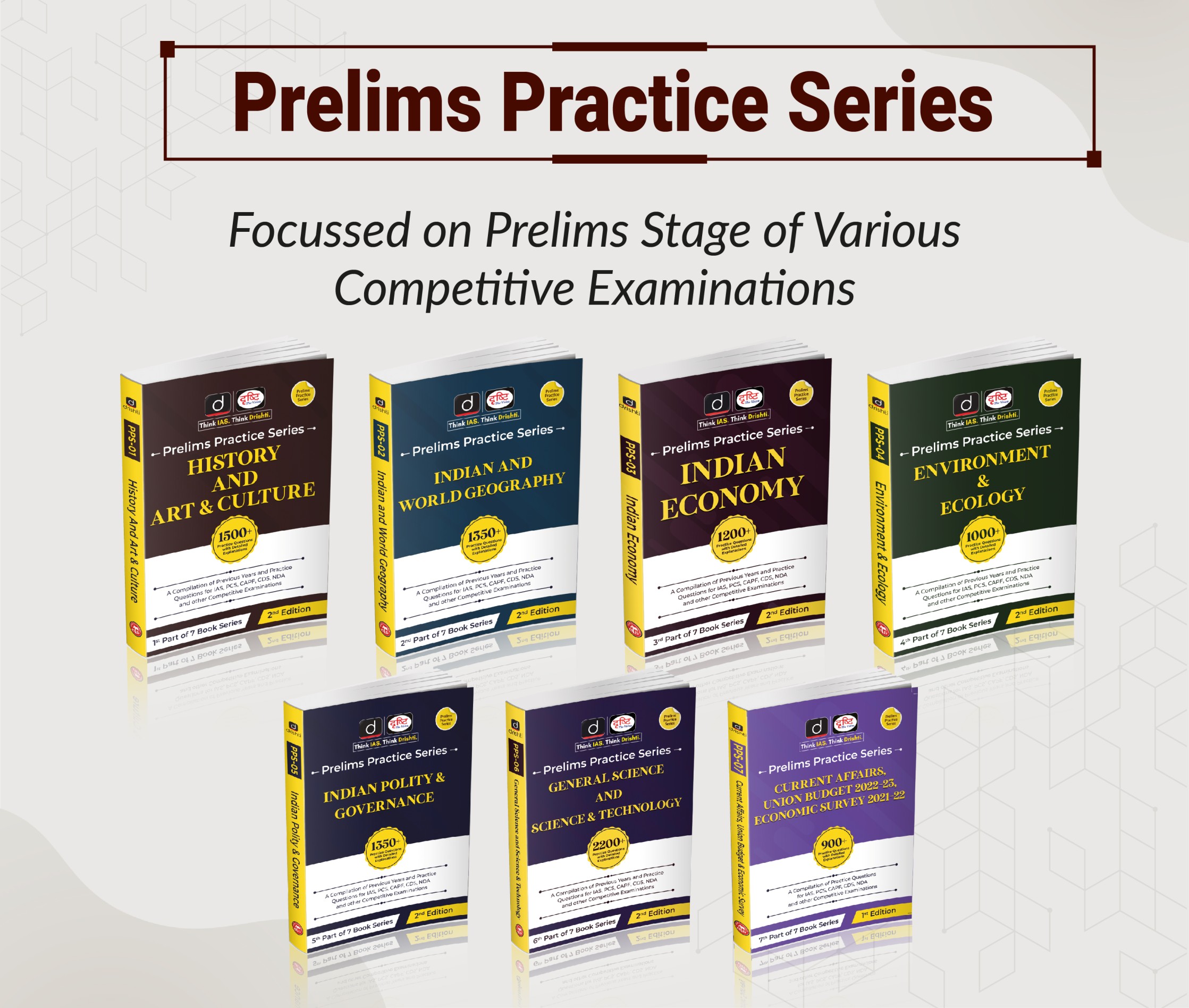
Governance
Human Development Report 2021-22
For Prelims: Human Development Report, Human Development Index(HDI), United Nations Development Programme (UNDP), Gross national income (GNI), Sustainable Development Goals, Gender Inequality Index, Multidimensional Poverty Index.
For Mains: Human Development Report 2021-22.
Why in News?
According to the Human Development Report 2021-22, India’s rank on the Human Development Index (HDI) has slipped from 130 in 2020 to 132 in 2022, in line with a global fall in HDI scores in the wake of the Covid-19 pandemic.
What is Human Development Report?
- About:
- Human Development Reports (HDRs) have been released since 1990 and have explored different themes through the human development approach.
- It's published by the Human Development Report Office for the United Nations Development Programme (UNDP).
- Goal: The goal is to contribute toward the expansion of opportunities, choice and freedom.
- Theme: The theme for Human Development Report 2021-22 is Uncertain Times, Unsettled Lives: Shaping our Future in a World in Transformation.
What is the Human Development Index?
- HDI is a composite index that measures average achievement in human development taking into account four indicators:
- Life expectancy at birth (Sustainable Development Goal 3),
- Expected years of schooling (Sustainable Development Goal 4.3),
- Mean years of schooling (Sustainable Development Goal 4.4),
- Gross national income (GNI) (Sustainable Development Goal 8.5).
What are the Key Highlights of the Report?
- Human Development Index:
- Drop in Life Expectancy: A large contributor to the Human Development Index’s recent decline is a global drop in life expectancy, down from 72.8 years in 2019 to 71.4 years in 2021.
- The last two years have had a devastating impact on billions of people worldwide when crises like Covid-19 and the war in Ukraine hit back to back and interacted with sweeping social and economic shifts and dangerous planetary changes.
-
Top Performers:
-
European states were among the best overall performers, with as many as 8 in the top 10 of the list.
-
These are Switzerland (1, 0.962), Norway (2, 0.961), Iceland (3, 0.959), Denmark (6, 0.948), Sweden (7, 0.947), Ireland (8, 0.945), Germany (9, 0.942) and Netherlands (10, 0.941).
-
-
Asian Region:
-
At 73 and with an index value of 0.782, Sri Lanka emerged as the best performer in the Indian sub-continent. The island nation was followed by China (79 and 0.768), Bhutan (127 and 0.666), Bangladesh (129 and 0.661), India, Nepal (143 and 0.602) and Pakistan (161 and 0.544).
-
- Indian Perspective:
- Human Development Index: India’s HDI value stood at 0.633 in 2021, which was lower than the world average of 0.732. In 2020, too, India recorded a decline in its HDI value (0.642) in comparison to the pre-Covid level of 2019 (0.645).
- Life expectancy: In 2021, India’s life expectancy at birth was recorded at 67.2 years.
- Schooling: Expected years of schooling at 11.9 years, mean years of schooling at 6.7 years,
- Gross National Income: The gross national income per capita stood at USD 6,590.
- Gender Inequality Index: India has been ranked 122 on the Gender Inequality Index.
- Drop in Life Expectancy: A large contributor to the Human Development Index’s recent decline is a global drop in life expectancy, down from 72.8 years in 2019 to 71.4 years in 2021.
-
Inequality-adjusted Human Development Index:
-
Gender Development Index:
- Gender Inequality Index:
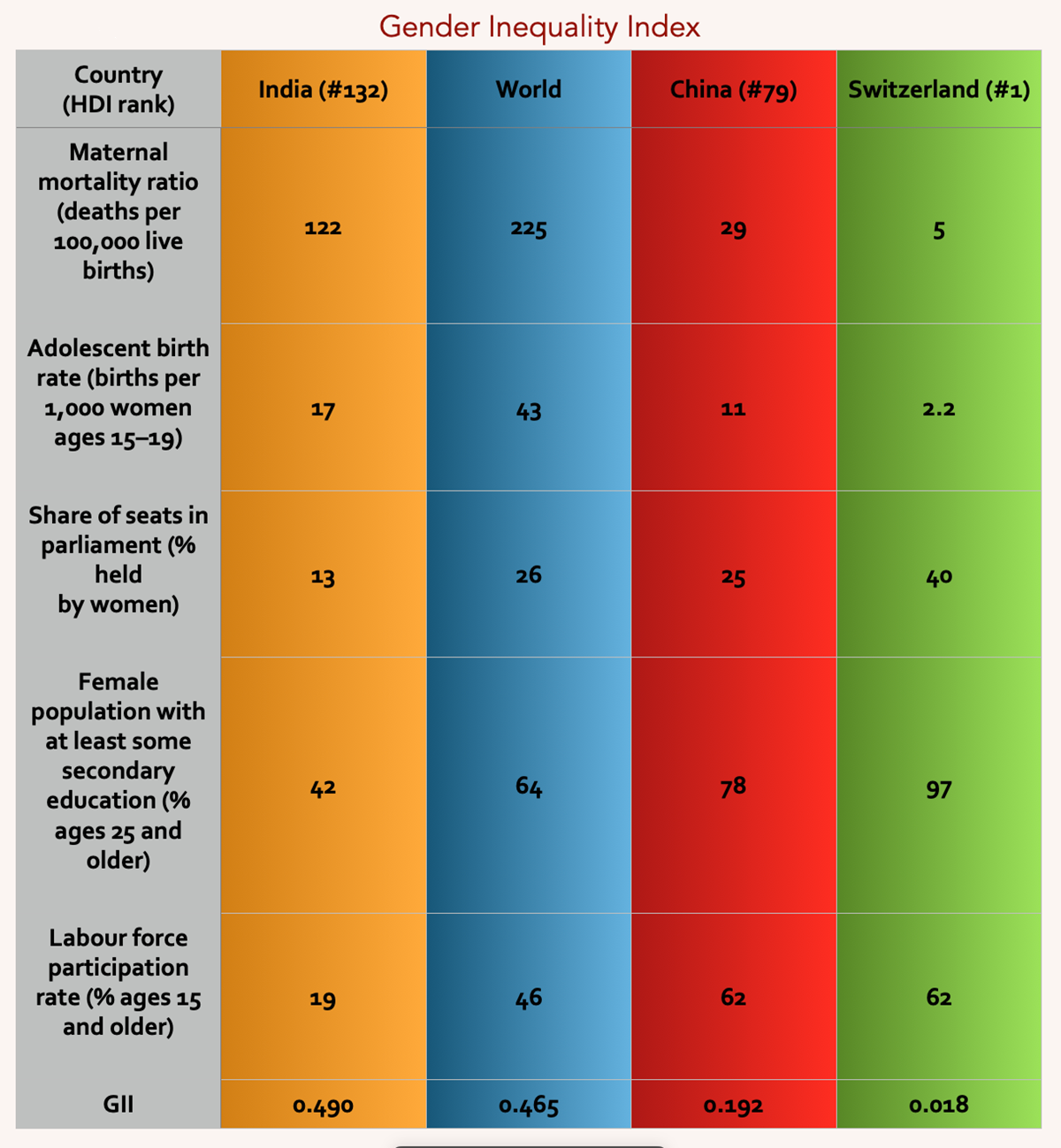
-
GII presents a composite measure of gender inequality using three dimensions:
-
Reproductive health,
-
Empowerment and
-
The labour market.
-
-
In GII, India is at the 122nd rank.
-
- Multidimensional Poverty Index (MPI):
-
Planetary pressures-adjusted Human Development Index:
-
It adjusts the HDI for planetary pressures in the Anthropocene to reflect a concern for intergenerational inequality, similar to the Inequality-adjusted HDI adjustment — which is motivated by a concern for intragenerational inequality.
-
The PHDI value can be interpreted as the level of human development adjusted by carbon dioxide emissions per person (production-based) and material footprint per person to account for excessive human pressure on the planet.

-
- Other insights:
- Humans are not prepared for climate change: It stated that humans were unprepared for a world with climate crises like fires and storms and other planetary-level changes brought about due to the Anthropocene in recent years.
- Population Decline of Insects: Without an abundance of insect pollinators, humans face the mind-boggling challenge of growing food and other agricultural products at scale.
- As insects are important because of their diversity, ecological role and influence on agriculture, human health and natural resources.
- They create the biological foundation for all terrestrial ecosystems, further, they cycle nutrients, pollinate plants, disperse seeds, maintain soil structure and fertility, control populations of other organisms and provide a major food source for other taxa.
- Microplastic menace: Plastics are now everywhere, in country-sized garbage patches in the ocean, in protected forests and distant mountaintops and in people’s lungs and blood.
UPSC Civil Services Examination Previous Year Question (PYQ)
Prelims
Q. The Multi-dimensional Poverty Index developed by Oxford Poverty and Human Development Initiative with UNDP support covers which of the following? (2012)
- Deprivation of education, health, assets and services at household level
- Purchasing power parity at national level
- Extent of budget deficit and GDP growth rate at national level
Select the correct answer using the codes given below:
(a) 1 only
(b) 2 and 3 only
(c) 1 and 3 only
(d) 1, 2 and 3
Ans: (a)
Exp:
- The Multidimensional Poverty Index (MPI) reflects the deprivations that a poor person faces simultaneously with respect to education, health and living standards, as reflected in the following table. Hence, statement 1 is correct.
- Therefore, option (a) is the correct answer.
Mains
Q. Despite Consistent experience of high growth, India still goes with the lowest indicators of human development. Examine the issues that make balanced and inclusive development elusive. (2016)


Important Facts For Prelims
Quick Reaction Surface to Air Missile system
Why in News?
Recently, India conducted six successful flight-tests of the Quick Reaction Surface to Air Missile (QRSAM) system from Integrated Test Range (ITR) Chandipur off the Odisha coast.
- The test was jointly conducted by the Defence Research and Development Organisation (DRDO) and Indian Army.
What is QRSAM?
- About:
- QRSAM is a canister-based system, which means that it is stored and operated from specially designed compartments.
- In the canister, the inside environment is controlled, thus along with making its transport and storage easier, the shelf life of weapons also improves significantly.
- The system is capable of detecting and tracking targets on the move and engaging targets with short halts.
- QRSAM is a canister-based system, which means that it is stored and operated from specially designed compartments.
- Range and mobility:
- It is a short-range surface-to-air missile (SAM) system, primarily designed and developed by DRDO to provide a protective shield to moving armoured columns of the Army from enemy aerial attacks.
- The entire weapon system has been configured on a mobile and manoeuvrable platform and is capable of providing air defence on the move.
- It has been designed for induction into the Army and has a range of 25 to 30 km.
- Functioning:
- The QRSAM weapon ensemble, which functions on the move, consists of a fully automated command and control system.
- It also consists of two radars - Active Array Battery Surveillance Radar and Active Array Battery Multifunction Radar - with one launcher.
- Both radars have 360-degree coverage with “search on move” and “track on move” capabilities.
- The system is compact, uses a single stage solid propelled missile and has a mid-course inertial navigation system with two-way data link and terminal active seeker developed indigenously by DRDO.
- The QRSAM weapon ensemble, which functions on the move, consists of a fully automated command and control system.
UPSC Civil Services Examination Previous Year Question (PYQ)
Q. What is “Terminal High Altitude Area Defense (THAAD)”, sometimes seen in the news? (2018)
(a) An Israeli radar system
(b) India’s indigenous anti-missile programme
(c) An American anti-missile system
(d) A defence collaboration between Japan and South Korea.
Ans: (c)
Exp:
- Terminal High Altitude Area Defence (THAAD) is an American anti-missile system designed to intercept and destroy short and medium-range ballistic missiles during their “terminal” phase of flight when they are falling towards the target.
- They have the ability to intercept missile inside and outside the atmosphere.
- It is interoperable with other ballistic missile defence systems and is highly mobile and deployable worldwide.
- Therefore, option (c) is the correct answer
Q. With reference to Agni-IV Missile, which of the following statements is/are correct? (2014)
- It is a surface-to-surface missile.
- It is fuelled by liquid propellant only.
- It can deliver one-tonne nuclear warheads about 7500 km away.
Select the correct answer using the code given below:
(a) 1 only
(b) 2 and 3 only
(c) 1 and 3 only
(d) 1, 2 and 3
Ans: (a)
- Agni-IV is a nuclear-capable long-range ballistic missile of India, with a strike range of 4,000 km.
- The indigenously developed Agni-IV is a two-stage surface-to-surface missile. It is 20 metres long with a weight of 17 tonnes. Hence, statement 1 is correct.
- It is a two stage solid fuelled system that can carry a one-tonne nuclear warhead over a distance of 4,000 kilometres. Hence, statements 2 and 3 are not correct.
- Therefore, option (a) is the correct answer.



.png)
